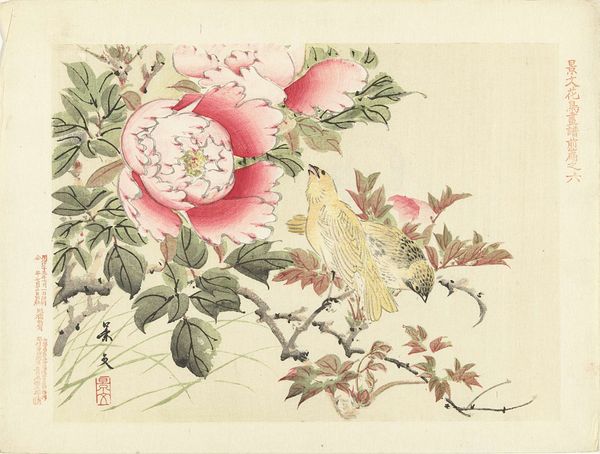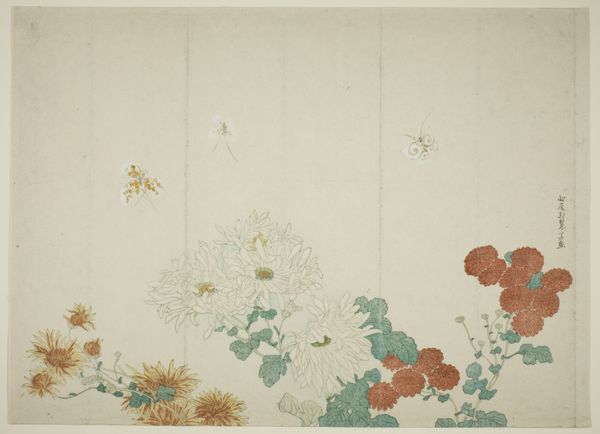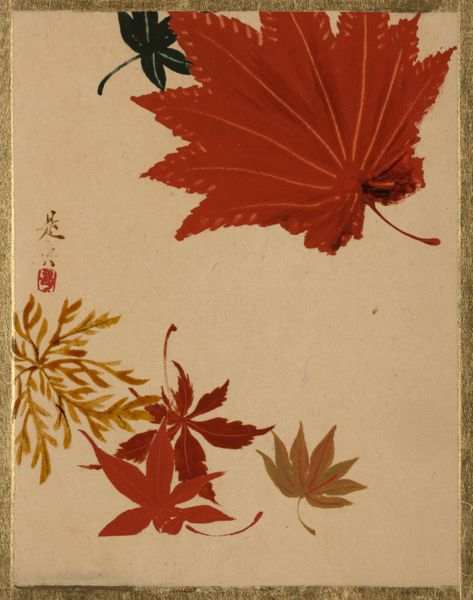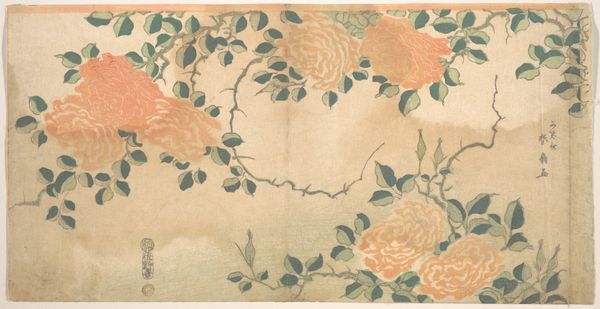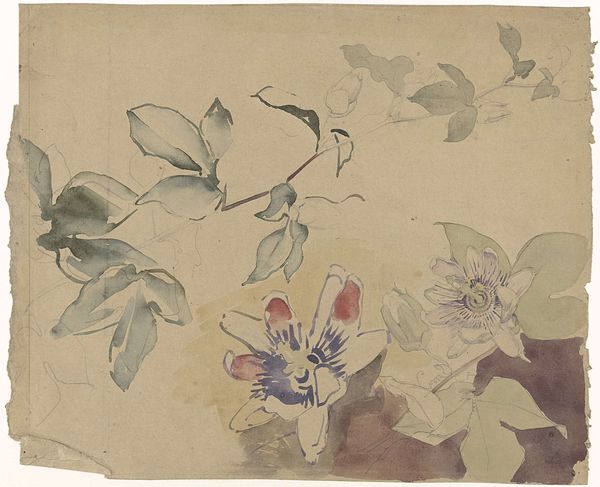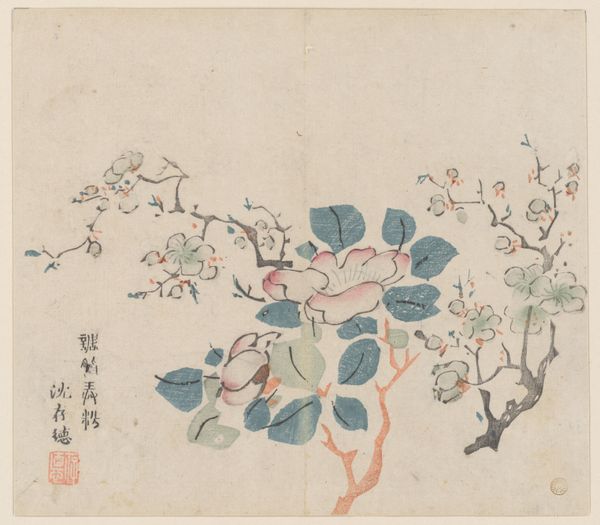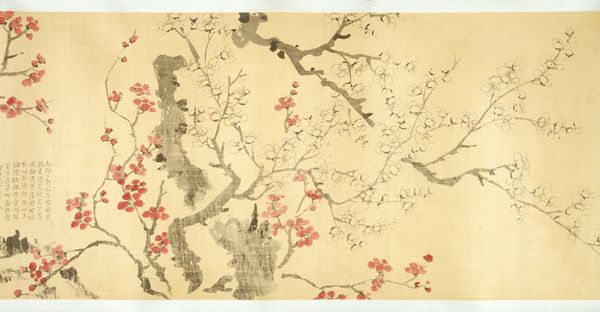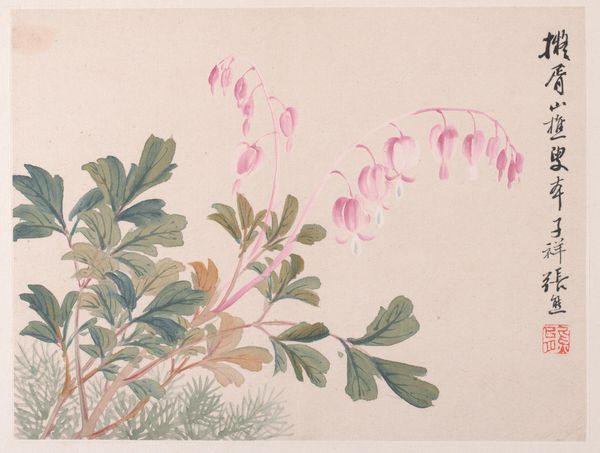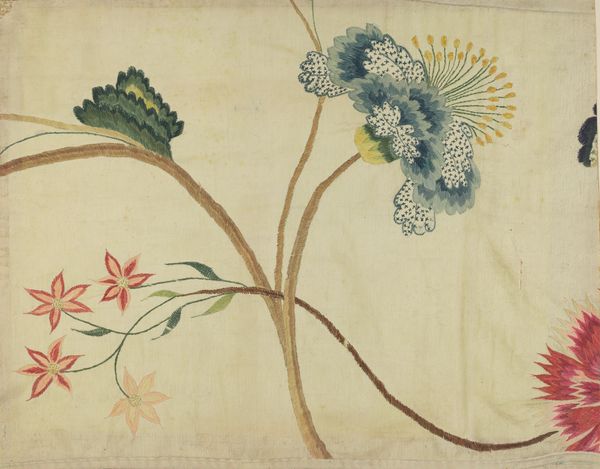
Dimensions: 9 x 12 3/4 in. (22.86 x 32.39 cm) (sheet)
Copyright: Public Domain
Curator: Looking at "Ornament. Chinoiserie. Flowers," an etching and drawing by Pierre Charles Canot, dating roughly around 1760, currently held at the Minneapolis Institute of Art, I'm struck by the imagined flora. Editor: It's surprisingly calming, isn’t it? The delicate lines and muted colours evoke a quiet, almost meditative state, even though the flowers themselves are quite fantastical. It has the same lightness of being as the flower arranging traditions that came centuries later. Curator: The 'Chinoiserie' element situates this piece within a larger context of European fascination and appropriation of East Asian aesthetics during the 18th century. What symbols are jumping out at you? Editor: Well, immediately the bell-shaped flowers call to mind associations with both mourning and celebration depending on cultural context; the drooping shape can symbolize sadness, yet bells also herald joyful news. Curator: Precisely. These are not botanically accurate representations, of course, but rather an idealized version filtered through a Western lens. This brings up the themes of colonialism. Who are the flowers really "for?" What kind of setting were they intended for? Editor: The juxtaposition of recognizable and utterly strange botanical forms intrigues me. This evokes the cross-cultural pollination occurring in the collective unconscious through patterns. Each culture takes images and interprets them in a new world, so one could say it is natural rather than an intentional appropriation. Curator: I disagree; the intentionality is vital here. Understanding how such decorative arts served to exoticize and create hierarchies is critical. Canot, whether intentionally or not, perpetuated an image of the ‘Orient’ as other and subservient through these playful floral arrangements. How much were Westerners influenced to see themselves in juxtaposition to the lands that were available for plundering? Editor: Perhaps, though, by focusing solely on power dynamics, we risk overlooking the genuine artistic curiosity that fueled Chinoiserie. This could instead evoke images of the meeting and clashing of different views of life on the human imagination, each flowering out of different civilizations. Curator: Still, context is vital when the style became part of Western narratives of dominance, influencing fashion and interiors. And what social impact do seemingly simple ornamental designs carry when they promote distorted global relationships? Editor: Point taken. It is a potent reminder that beauty never exists in a vacuum. Curator: Indeed, and critical consideration reminds us to appreciate visual pleasure without forgetting the shadow cast by history. Editor: Yes, there is so much to unpack in these delicate lines, it makes it almost… human.
Comments
No comments
Be the first to comment and join the conversation on the ultimate creative platform.
